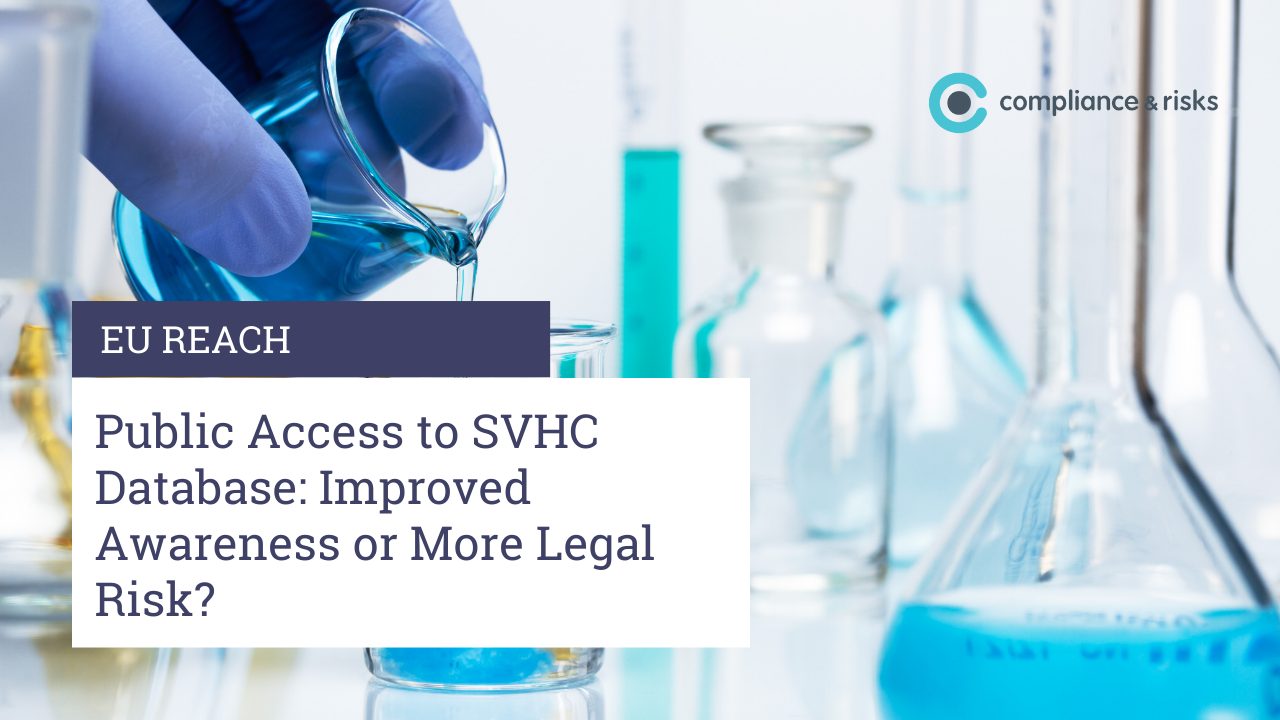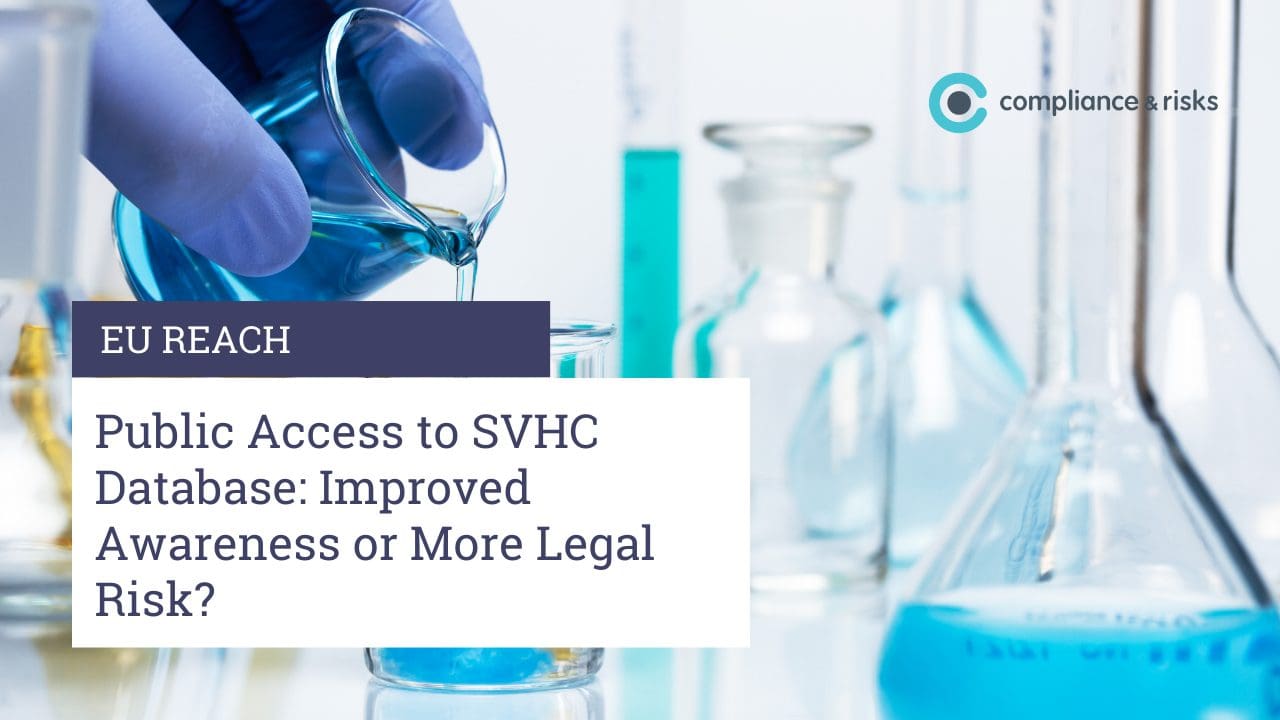
Public Access to SVHC Database: Improved Awareness or More Legal Risk?

 Recently, the European Chemicals Agency (ECHA’s) database of Substances of Very High Concern (SVHCs) has been opened to allow the public to access it. The database lists details of articles containing SVHCs across a broad range of product categories.
Recently, the European Chemicals Agency (ECHA’s) database of Substances of Very High Concern (SVHCs) has been opened to allow the public to access it. The database lists details of articles containing SVHCs across a broad range of product categories.
This development brings with it both opportunities, but also risks. The change is likely to significantly impact consumer behavior. Being more able to scrutinize their chemical composition, consumers are likely to be more selective about which products they chose to purchase. With the additional granular information provided to them at their fingertips, consumers or consumer interest groups may also be better equipped to take action, whether informal or formal (including legal action), against companies.
For manufacturers and those in the supply chain, this increased accessibility to detailed information about products arguably gives greater control to manage any downstream risk, which is likely beneficial in respect of chemical laws, but also in respect of increasingly onerous corporate social responsibility requirements that rely on detailed information about component aspects of products and their supply chain and which apply to many product categories that are listed on the database.
SVHCs are substances which contain more than 0.1% weight by weight of chemicals listed on the REACH Candidate List, a list of potentially hazardous substances that are regulated by REACH. Since 5 January 2021, manufacturers and importers that supply articles containing these SVHCs, have been required to notify these to ECHA Companies. These obligations are contained within the EU Waste Framework Directive (“WFD”), which sets out basic concepts and definitions relating to waste management, including specifically addressing the historic regulatory gap which used to exist regarding the disposal of REACH-regulated products. All SVHC notifications are stored in the ECHA’s “Substances of Concern in Products (SCIP) database”, set out under the WFD. There is a particularly broad range of articles listed in the database across a wide range of product categories.
The SCIP database has now reached an important milestone in its development. From 14 September 2021, public access to the database was granted and consumers have been able to search the data by article name or brand, product category, type of material or the chemical name.
The public now have access to all information contained on the database, which includes comprehensive records on chemicals issues throughout the whole lifecycle of products and materials, including the waste stage. Examples of specific, particularly relevant pieces of information that consumers and the general public can obtain from the database include technical data to identify the article, instructions on how to use it safely, the SVHC, its location, and the type of material in which it is contained.
A snapshot of the overall trends that the database has allowed insight into include:
| Most commonly notified product categories in the database | Most commonly SVHCs in notifications |
|
|
Practical impact
There are numerous practical impacts of the database being publicly accessible now, some of which are policy drivers behind the move:
- Ordinary consumers and/or consumer interest groups may make more informed choices by checking whether a product contains hazardous chemicals and reading its safe use instructions
- Waste operators may utilize the data to increase the re-use of articles and further develop recycling processes and safe instructions for disposal
- Increased transparency in the use of SVHCs may act as a driver for substitution i.e. to get extremely hazardous substances out of products wherever possible. This aligns with the EU’s growing focus on substituting hazardous chemicals in products wherever possible. Non-Governmental Organizations, or NGOs, therefore have a vested interest in using the data to advance goals relating to substitution, sustainability and safer chemicals
- It is expected that the database will act as an enabler to the EU’s circular economy action plan to put further emphasis on the tracking of SVHCs and support the policy drivers for cleaner waste streams and sustainable consumption
Overall, this development is an important milestone in global product safety policy. If there are better informed consumers in relation to both ingredients or restrictions on certain substances, there is a growing risk for companies that more consumer claims may be brought in respect of particular products or articles. Consumers or consumer interest groups may also exercise additional rights in respect of requests for more detailed information and/or simply be better informed to ask companies more detailed questions on these topics. Producers should be aware of this growing potential risk when considering the use of SVHCs.
The development provides a rare opportunity for companies also – given the supply chain for modern-day products is complex, this database can assist producers of articles in gaining much better visibility on the ingredients they use when manufacturing. By identifying these substances upfront, safer alternatives may be sought out or pressure on downstream suppliers may be applied to better align their practices with the forward looking policy of the EU’s chemicals and waste regime regarding safety and environmental and social concerns.
Want access to more insights and analysis from our expert Knowledge Partner Network? Sign up to our newsletter!








